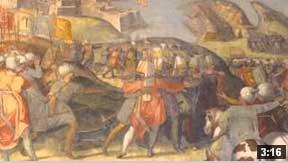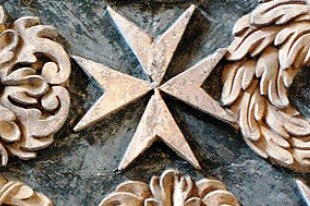Knights of St. John
It is hard to miss the legacy of the Knights in Malta. They gave the Islands one its best-known faces to the world, the eight-pointed Maltese Cross.
No era has left such an imprint on the Islands as the 250-year rule of the Order. From their daily lives to their valiant battles, all is documented in the archives, architecture and folklore of the Maltese Islands.
To trace the Knights, start in the places they made home: the Three Cities and Fort St. Angelo; then Valletta, the baroque, fortified city they built after the Great Siege of 1565.
You’ll sense their presence by wandering through their palaces, courtyards and gardens.
Across the Maltese Islands, you’ll find more evidence of their stay in their military engineering and architectural feats: forts, bastions, watch towers, acquaducts, churches and cathedrals. Not to mention the rich patrimony they bequeathed the Islands with works of art, furniture, silverware and sculpture. Less evident, but no less important, is the place they gave the Islands in the history of medicine.
Their Sacra Infermeria in Valletta was the foremost hospital of Europe in its day.
See: Caravaggio and Mattia Preti
|
|
||
|
The Maltese Cross was officially adopted by the Order of the Knights Hospitallers of St. John in 1126. Its eight points denote the eight obligations of the knights, namely “to live in truth, have faith, repent one’s sins, give proof of humility, love justice, be merciful, be sincere and whole-hearted, and to endure persecution”. With time, the eight points also came to represent the eight “langues” (national groupings) of the noblemen who were admitted into the brotherhood, namely those of Auvergne, Provence, France, Aragon, Castille and Portugal, Italy, Baviere (Germany), and England (with Scotland and Ireland). To this very day, the Maltese Cross remains the symbol of the Sovereign Military Order of Malta. |
||



